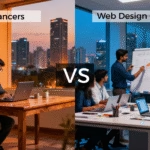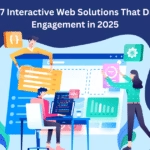Bill Gates,
In modern world, people enjoy using the internet. But few with a disability were unable to utilize such things. As Bill Gates, Co-founder of Microsoft, said
“The advanced of technology, is based on making it fit in so that you don’t even notice it, so it’s part of everyday life”
Donot agonize about disability let’s revise the way of life using technology.
Introduction to Web Accessibility
Web accessibility implies every person in the world, even with a disability, can browse the products on the web independently and also understand your written content and services. Specially designed and coded websites and web tools will make sure that people with disability can use them. However, presently, multiple sites and tools are designed with accessibility impediments that make them challenging or unattainable for some people to use.
People with disability will have different types of disabilities. So, they require different types of web accessibility accommodations.
Some visionless person needs descriptive alt tags on your images so their screen reader can describe them to them
- Someone with a motor disability needs to be able to navigate the whole site using the keyboard instead of a mouse
- Someone who is deaf needs subtitles or sign language interpretation alongside your videos
- Someone with low vision needs a high contrast ratio and clear fonts on all your texts
Simple steps to build Web Accessibility
1. Choose the best CMS
Pick right content management system to build your websites.
There are multiple CMS obtainable. After choosing correct CMS, grab suitable template, theme, content, layouts, modules and plugins.
Additional Tip
Make sure that content is accessible while editing toolbars and video players. For example, editing toolbars should include options for headings and accessible tables, and video players should include closed captioning.
2. Creating the Content structure
Create unique content, use styles, proper arrangements of headings by using CSS. To navigate content, screen readers will use heading structures and, make sure of the heading arrangements.
Additional Tip
- Always use <h1> tag for the primary title of the page.
- Use headers to exhibit and manage your content structure.
- Follow heading levels (starts from an <h1> to an <h3>), as screen reader users will wonder if content is missing.
3. Include alt text for images.
Alt text should be provided for all images. It is regarded as an substantial criteria. By doing this, screen reader users will understand the messages communicated with images on the page. This is particularly essential for instructive images (such as infographics).
Additional Tip
While making the alt text, the content should contain the message you expect to convey through that image. If alt text is not provided, then screen reader will read the file name with the image attached with the link.
4. Unique Links & Names
It is important to use text while including links in your content.
Use descriptive words for your link. Try to avoid using short words like
‘click here’ which is not considered as descriptive word, and is unusable for a screen reader user. It works in simple way, visual users scan the page for linked text, visually-impaired users will use their screen readers to scan for links. Using descriptive text will help to explain the link context and also aids screen reader users often do not read the link within the context of the rest of the page.
Additional Tip
Content of the links, were presented first. This will help screen readers to navigate links.
5. Use color with care
The most typical form of color deficiency, red-green color deficiency, impacts approximately 8% of the population. Using colors will helps disabled people to distinguish and organize content clearly. Also, it is significant for other people too. Consider all the primary characters which is to be used in the websites.
Additional Tip
There are many tools where we can assess color, contrast, aids you in making your page as visually usable as feasible to people with low vision.
6. Creating Accessibility forms.
While creating form field you must ensure that they are not labeled appropriately, the screen reader user does not have the same cues available as the sighted user. It may be inconceivable to tell what type of content should be included into a form field.
Try to give labels to fill the each form field which would help them to understand clearly.
Additional Tip
For filling name field, instead of giving Fullname, give as First name and Lastname. We have to use two separate descriptive label using label tag and also ensure the position of the label. This type of form organization can help a screen reader user keep track of progress, and can provide the context that might be lost while filling out the form. If certain form fields are required, the field should be labeled accordingly, and configured to alert the screen reader user.
7. Creating data tables
Using tables for page layout adds added verbosity to screen reader users. If screen readers encounters a table, the userwill be advised that there is a table with “x” number of columns and rows, which preoccupies from the content.
Additional Tip
Use CSS for layout. Do not use table while using layout in website
8. Accessible with Keyboards
Users with mobility disabilities, including repetitive anxiety, may not be able to operate a mouse or trackpad. The only option for these people are able to access content through a keyboard by pressing the “tab” or “arrow” keys, or with the use of alternative input devices such as single-switch input. As a result, the tab order should match the visual order, so keyboard-only users are able to logically navigate through site content.
Additional Tip
Do not use elements that only activate when a user approaches over items with a mouse, as keyboard-only or screen readers users will not be able to start them.
9. Create ARIA roles
ARIA (Accessible Rich Internet Applications) is a complex, effective technical specification for adding accessibility data to aspects that are not natively attainable. You should consistently use native HTML elements when they are available. Remember, the first rule of ARIA is “Don’t use ARIA.” Numerous functions that used to direct ARIA attributes are now implemented in HTML5.
Additional Tip
- Adding cues to report screen reader users of dynamic page changes, such as stock tickers and search filters.
- Rendering complex, interactive widgets such as date pickers accessible to screen reader users.
10. Accessible Dynamic content.
Screen readers may not be aware, when content updates automatically (without a page refresh).
This includes screen overlays, lightboxes, in-page updates, popups, and modal dialogs. Keyboard-only users may be trapped in page overlays.
Additional Tip
These functions can be easily driven accessible. Use ARIA roles will support front end development and frameworks specifically support accessibility.












